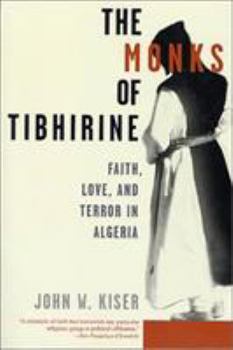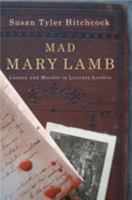The Monks of Tibhirine: Faith, Love, and Terror in Algeria
Select Format
Select Condition 
You Might Also Enjoy
Book Overview
The inspiration for the major motion picture "Of Gods and Men"
In the spring of l996 armed men broke into a Trappist monastery in war-torn Algeria and took seven monks hostage, pawns in a murky negotiation to free imprisoned terrorists. Two months later their severed heads were found in a tree; their bodies were never recovered. The village of Tibhirine had sprung up around the monastery because it was a holy place protected by the Virgin Mary, revered by Christians and Muslims alike. But napalm, helicopters, and gunfire had become regular accompaniments to the monastic routine as the violence engulfing Algeria drew closer to the isolated cloister high in the Atlas Mountains.Customer Reviews
Rated 5 starsA beautiful book!
The story of these trappists who died in Algeria in 1996 is a remarkable one that is told very well by the author. It is rare that such a sad event, the kidnapping and decapitation of these good, harmless men can generate such a feeling of hope and optimism. I lost a lot of my prejudices against Muslims reading this book. What a good and hospitable people most of the folk were. I cannot ever forget the reaction of the...
0Report
Rated 5 starsTragic and Hopeful
This excellent book manages the remarkable task of juggling three important themes at once: the touching personal stories of a community of Trappist monks in Algeria, an uplifting investigation of what it means to be a true Christian and "live the Gospels", and finally an unraveling of the confusing and depressing story of Algeria's civil war. The framework for Kiser's book is the sad and unheard (in the US) story of the kidnapping...
0Report
Rated 5 starscompelling and provocative
Kiser has written a compelling and inspiring account that humanizes the tragedy of the monks of Tibhirine and of the Algerian civil war more generally. What I find particularly impressive is Kiser's refusal to exploit the subject matter, and his determination to dig below the surface level and take the drama of events to a deeper level. He provides the necessary information to situate the drama of the monks within a much...
0Report
Rated 5 starsLove your neighbor at your peril?
I love to read good books. It is rare that an author can integrate the chaos of the Muslim terror in Algeria of the last decade and focus it through the eyes of seven Trappist monks so that we can understand man's inhumanity to man and be willing to accept it.John Kiser deservs all the accolades on the dust jacket of his work.
0Report
Rated 5 starsspiritual power
The story of Kiser's book is deceptively simple: in 1996 a small group of Christians from a Trappist monastery in Algeria was kidnapped, then murdered by Islamic extremists. The book explains how the Trappists came to Algeria, why they remained there under conditions of great personal danger, how they earned the admiration of hundreds of Muslims from all over Algeria, and why they became in 1996 a convenient target of Islamists...
0Report









































